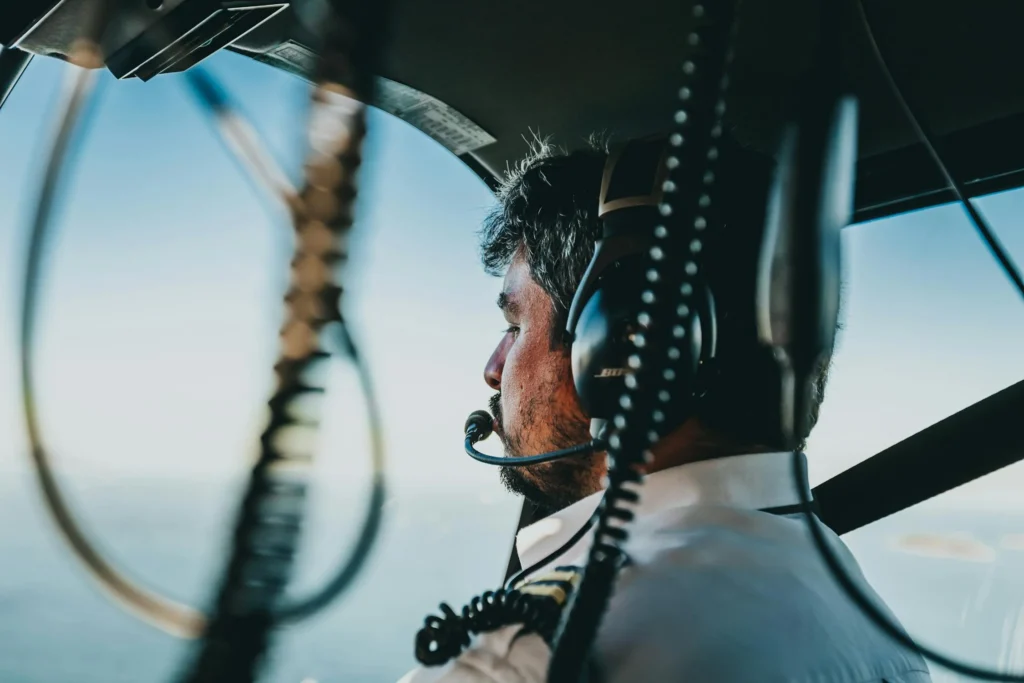
Operating an aircraft demands expertise and skill, along with essential equipment to ensure regulatory compliance, secure flight operations, and cost efficiency. For both professional and leisure pilots, specific devices and instruments are essential for each journey.
This guide explores four critical pieces of equipment that should be present in every pilot’s cockpit.
1. Aviation Headset
Probably the most crucial piece of personal gear you will need as a pilot is a top-notch aviation headset. In the cockpit, these specialist headphones have several important uses. Above all, they give unambiguous contact with air traffic control, which is necessary for obtaining directions and safely navigating crowded airspace. Aviation headsets also have great noise-reducing power, therefore shielding your hearing from the continuous drone of engine sounds that can cause long-term hearing loss.
For instance, the David Clark H10 13.4 headset provides durability and comfort throughout lengthy flights. Its robust construction and gel ear seals allow pilots to wear it comfortably for hours without fatigue. The advanced noise-canceling technology effectively blocks out engine drone and ambient aircraft noise, which is why many experienced pilots consistently recommend this model to newcomers. Overall, investing in a high-quality headset proves invaluable for a flying career, providing essential hearing protection and ensuring crystal-clear communication with air traffic control.
2. Electronic Flight Bag (EFB)
The days of hauling bulky flight bags loaded with logbooks, manuals, and paper charts are fast fading. Usually, a tablet with specific aviation software or an Electronic Flight Bag has transformed cockpit organization and flight preparation. EFBs provide constantly current information by giving quick access to up-to-date aeronautical charts, airport schematics, and approach plates.
Real-time weather data provided by many EFB systems enable you to make educated judgments on possible dangers or route modifications. These tools help simplify flight recording, weight and balance computations, and performance estimates, therefore lowering your burden and the possibility of mistakes. Certain sophisticated EFB devices even provide synthetic vision and traffic data, therefore greatly improving your situational awareness. The Federal Aviation Administration claims that correct EFB deployment can increase aircraft safety and lower pilot workload.
3. Backup Communication and Navigation Equipment
A basic idea in aviation safety is redundancy. Hence, every cockpit needs navigation tools and backup communication. In an emergency, a portable aviation radio is essential as a backup should the electrical system of your aircraft fail so that you may still contact air traffic control. Likewise, should your main navigation systems fail, a portable GPS navigation device offers an independent position reference. For worst-case situations many pilots additionally carry a personal locator beacon (PLB) or emergency position indicating radio beacon (EPIRB). When search and rescue call for these tools, they are absolutely vital.
Usually, from rechargeable or changeable batteries you check routinely before flights, these backup devices should have separate power sources. Knowing you have dependable backup systems will help you to have great peace of mind whether you are traveling in difficult circumstances or far-off locations. Particularly for flights over the ocean or isolated terrain, aviation regulatory agencies, including the FAA, highly advise redundant systems as part of normal safety procedures.
4. Weather Information Systems
Safe flying operations and decision-making depend on reliable, current meteorological information being easily available. Whether built into the avionics of the aircraft or accessible through portable devices, modern cockpits should be furnished with some type of weather information system. Real-time weather radar images from these devices let you see and steer clear of regions of precipitation and possible turbulence.
Many systems also include lightning detection features, which let you find and navigate thunderstorm activity that may be invisible on the radar. Crucially important for flight planning and in-flight decision-making, advanced weather information systems may provide winds aloft, temperature data, and even ice forecasts. Just as critical as having access to this weather data is knowing how to understand it properly. One of the main traits of seasoned, safety-conscious pilots is their capacity to make wise judgments depending on changing weather.
Conclusion
Adding these four basic kinds of tools to your cockpit improves flight operations’ safety and efficiency. Recall that the best tools help to complement rather than replace comprehensive training, good judgment, and adherence to correct processes.
By: Chris Bates









